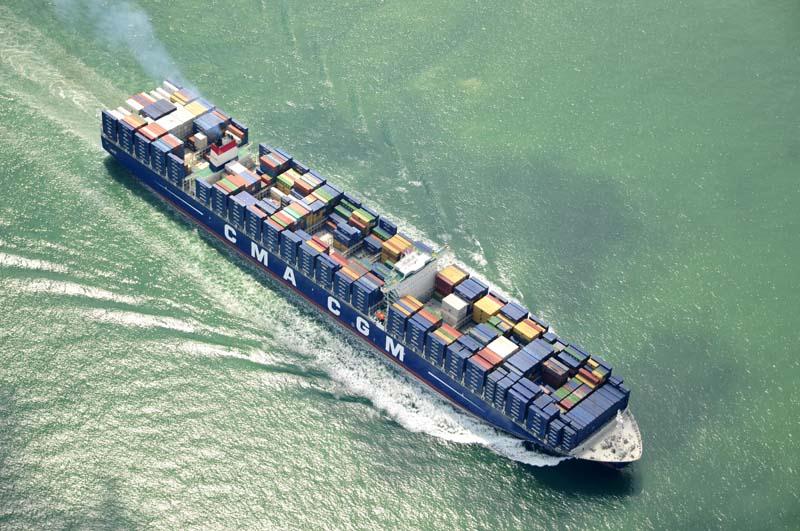Plagued with slowing economies, overcapacity, currency issues and other challenging operating conditions, the shipping industry went through a round of consolidation in 2015, with potentially more on the way.
In December, French shipping line CMA CGM made a cash offer to purchase Neptune Orient Lines for S$1.30 (US$0.92) per share, for a total of approximately US$2.4 billion.
Subject to approval from the authorities which is expected to be granted by mid-2016, NOL’s majority shareholder, state-owned Temasek Holdings, has irrevocably undertaken to accept the offer.
Rodolphe Saadé, vice chairman of CMA CGM, said in a statement that the transaction would represent a significant milestone in the development of the Marseille-based shipping line.

“Leveraging the complementary strengths of both companies, CMA CGM will further reinforce its position as a leader in global shipping with combined revenue of US$22 billion and 563 vessels,” said Saadé. “By bringing together the know-how of both teams, the enlarged group will be even better positioned to provide premium services to its customers across all markets. At a time when the shipping industry is facing strong headwinds, scale is more critical than ever to capitalize on synergies and capture growth opportunities wherever they arise.”
With the acquisition of NOL, which is currently the world’s 12th-largest shipping line, CMA CGM maintains its position as the third-largest ocean carrier in the world, behind Maersk and MSC.
According to CMA CGM, the acquisition would result in a combined fleet of 563 vessels with a total capacity of nearly 2.4 million TEUs, and a market share of about 11.5%.
Anne-Sophie Fribourg, sea-freight procurement manager at Bolloré Logistics in Paris, says that, overall, consolidation among shipping lines is beneficial to logistics service providers.
“Bolloré Logistics has agreements with all the major alliances and the consolidation deals will reinforce the solidity of our partners, which is very positive in an extremely volatile market,” says Fribourg. “Through mergers and acquisitions, we will also be capable of offering more global solutions to our customers.”
The NOL acquisition wasn’t the only deal to have been announced within the space of a month. Shortly afterwards, China Shipping Container Lines and COSCO Container Lines announced that they were merging to form the fourth-largest carrier in the world. Rumours of the tie-up began circulating when the two companies suspended the trading of their shares in August 2015.
According to COSCON, it will rent and operate CSCL’s ships and containers to focus on the containerized-shipping business, while CSCL’s emphasis will be on leasing vessels and containers. The enhanced scale and cooperation are expected to lower operating costs and increase efficiencies.
The business integration started at the beginning of 2016 and will be complete by the end of the year, according to COSCON.
The new Chinese entity will have a combined fleet of 288 container ships with a total capacity of approximately 1.58 million TEUs, occupying a global market share of 8%.
Fribourg says that consolidation is becoming a major trend in the industry because carriers need to find ways to restore their profitability.
“Through M&A, carriers will find more synergies and reach economies of scale,” she says. “I think the next possible merger will happen in Asia, either with Korean or Japanese carriers which have become more fragile with the emergence of the new consortia. Most probably, the first one will be Hyundai Merchant Marine and Hanjin. OOCL might also in the future become closer to the new Chinese consortium, and UASC is also looking for a partner to reach a bigger size and weigh more on the market.”
Another provider of logistics services is anticipating shipping consolidation to continue, at least in the near future.
“We expect the trend to move towards more M&A activity in the logistics industry, especially on the carrier side, to continue throughout 2016 and maybe even in 2017,” says Helmut Kaspers, chief operating officer of air and ocean at CEVA Logistics. “In the current supply-and-demand environment, M&A is one of the key methodologies to increase market share and optimize load factors or capacity usage.”
The wider impact of all these transactions on service providers is as yet unclear, according to Kaspers, who says that the entire shipping industry is carefully observing any upcoming mergers.
“For the coming six to eight months, there are no tremendous changes expected as these consolidations will need to receive approval from government and regulatory authorities,” he says. “Looking at the longer time frame, 2017 is most likely to be the year of changes that will have an impact on the whole industry as mergers and acquisitions will change the actual alliances.”
In terms of freight rates, Fribourg says that, because of the downward-trending economy, the market has been very imbalanced between supply and demand in 2015, at 8.5% versus 2.5%. This has brought rate levels on major trade lanes down to “historically low levels.”
“The situation should be better balanced in 2016, with supply only slightly above demand, at 4.6% versus 3.5%,” she says. “This is what the carriers will aim at, by a massive withdrawal of capacity. Rate-wise, I do not foresee any improvement in the first half of 2016. The market reversal will probably take place after the summer.”
Similarly, Kaspers is cautiously optimistic that the conditions to which the industry has been subjected will ease off somewhat, albeit not imminently.
“As I noted previously, in the short-term future, we expect the current trend of overcapacity to continue,” he says. “However, once the M&A activities prove their success, capacity will be reduced and therefore the current market situation will improve. That in turn will mean supply and demand will start to balance out in all trade lanes.”
By Jeffrey Lee
Asia Cargo News | Hong Kong



